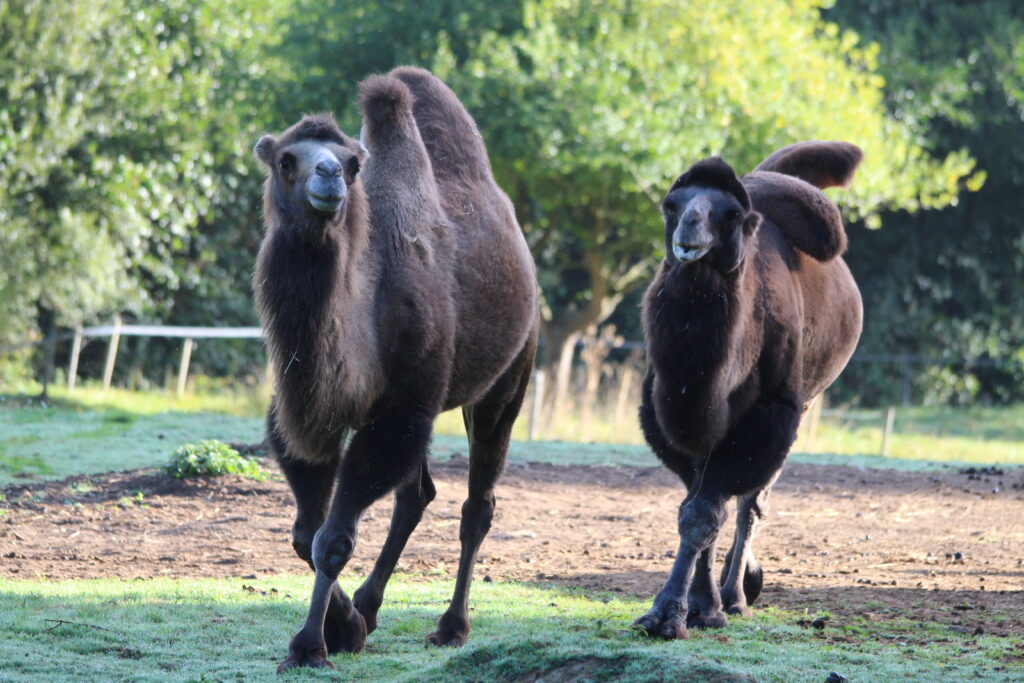
BACTRIAN CAMEL
Class: Mammals
Order: Artiodactyla
Family: Camelidae
Genus: Camelus
Species: Bactrianus
Geographic distribution: Gobi and Taklamakan Deserts
Habitat: Desert and semi-desert regions
Size: Approximately 2 m at the shoulder
Longevity: 50 years
Weight: 450 to 500 kg
Sexual Maturity: 3 to 5 years
Gestation: 13 months
Litter: 1 to 2 pups
Diet: Omnivorous, leaves, grass, seeds, etc. Can also feed on meat and bones if no vegetation is available
Protection Status: IUCN Status CR – Least Concern
Description
The Bactrian camel is perfectly adapted to arid environments, thanks to its two conical humps that storefat, serving as reserves of food and water. During periods of drought, it can convert this fat into water to survive. Its body is designed to with stand extreme conditions: its nostrils close during dust storms, and its thick eyelids and eyelashes protect its eyes.
Threats and preservation
It has been extensively domesticated, and the wild population is now down to less than a thousand individuals. The wild Bactrian camel (Camelus ferus) faces several threats: habitat loss due to agriculture, desertification, climate change, and poaching for its meat and skin. Additionally, extreme weather conditions affect access towater and grazing, further exacerbating the dangers for the species.